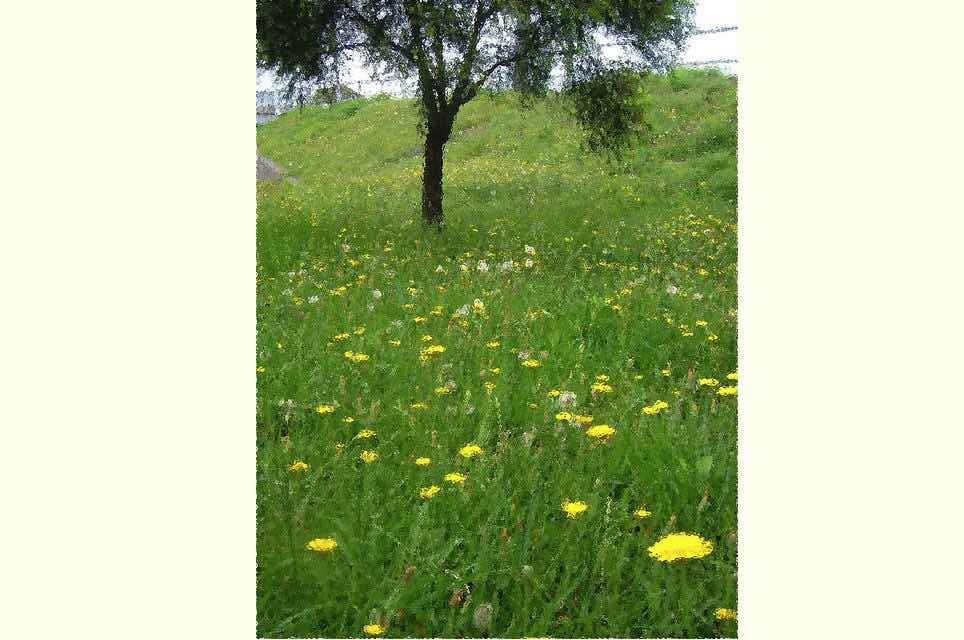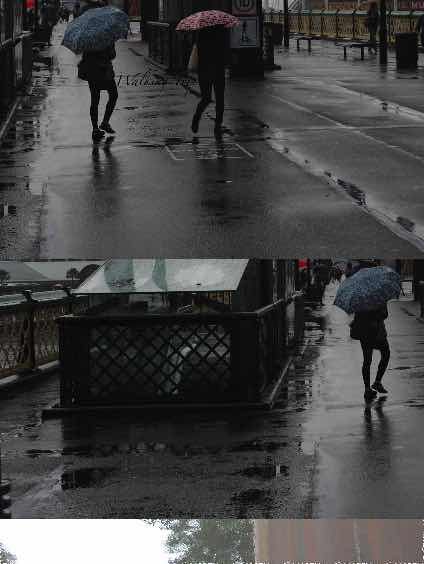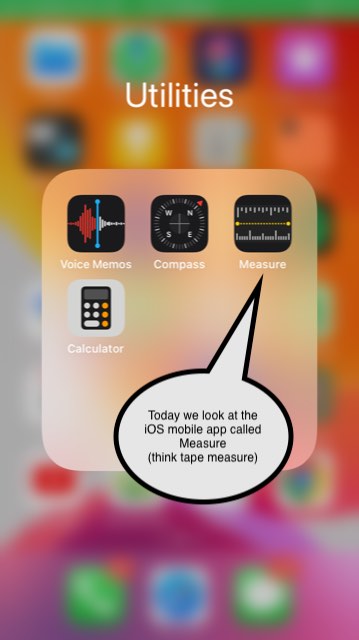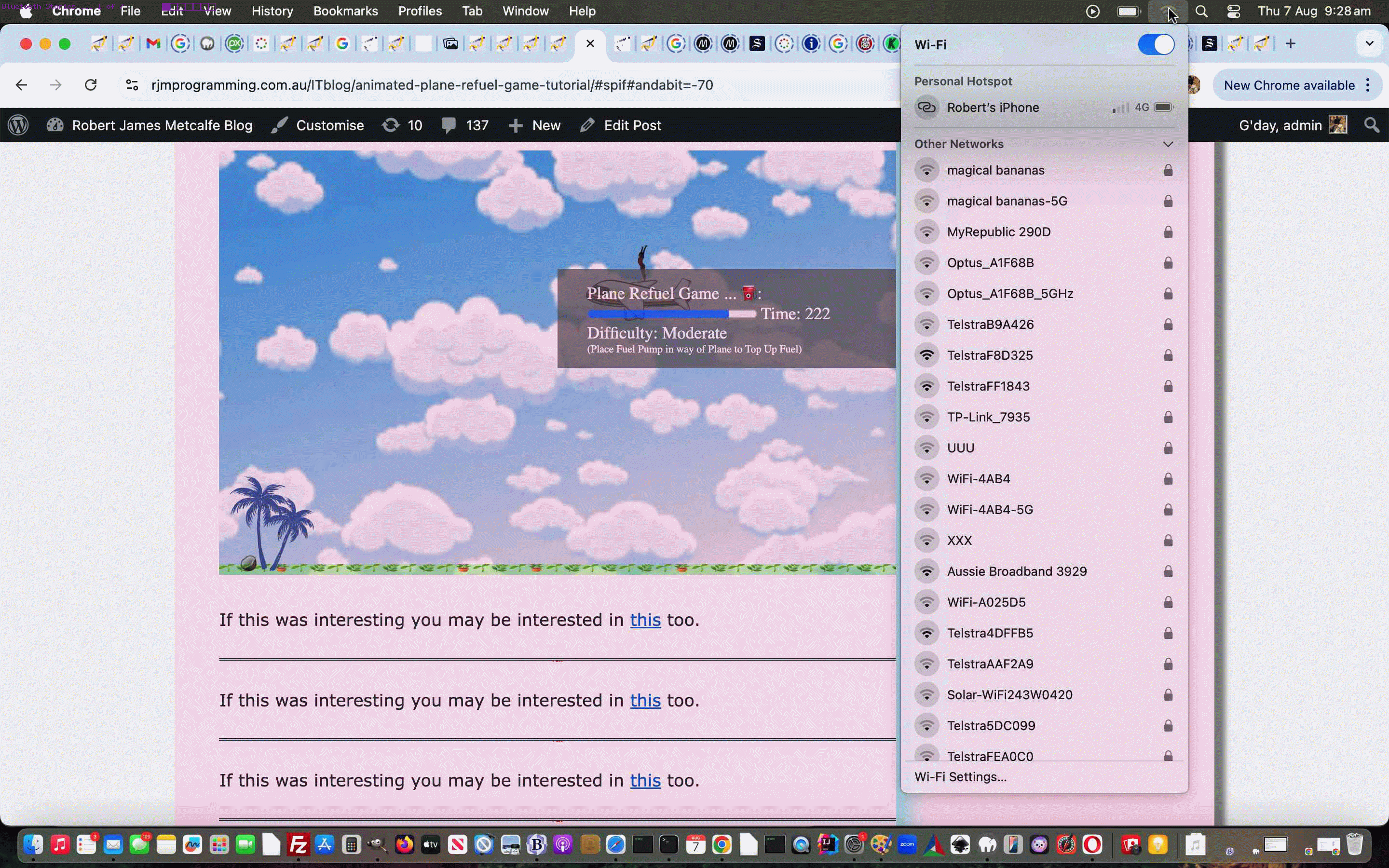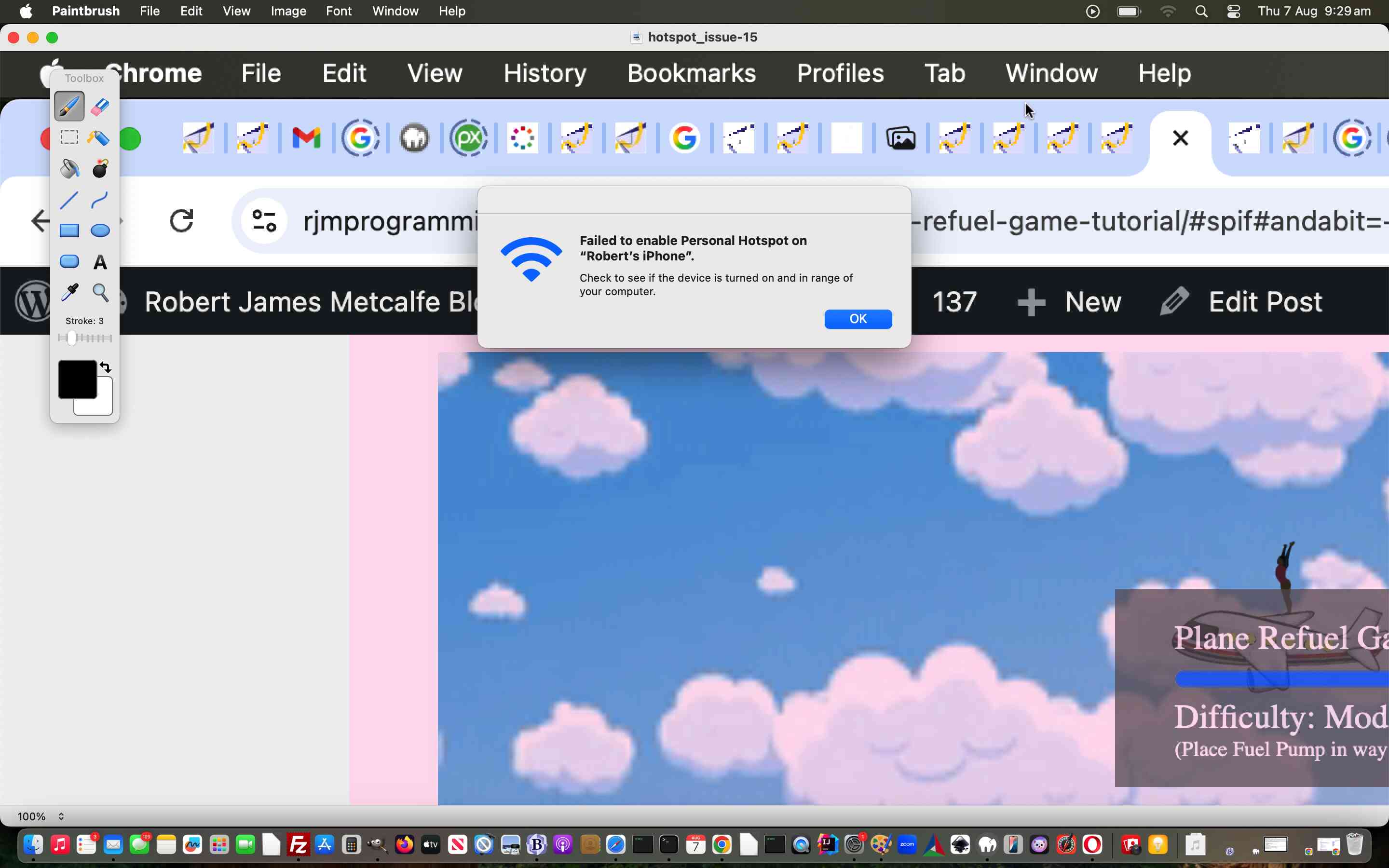
YouTube API Caller Phase Two Other Mimetypes Sharing Tutorial
We were hoping we could say “yesterday’s” but, three days later, the struggle is over regarding work after YouTube API Caller Phase Two Other Mimetypes Tutorial regarding sharing with someone when including …
- (albeit, so far, restricted) audio media mimetypes presented in an HTML audio element … and …
- (albeit, so far, restricted) video media mimetypes presented in an HTML video element … while today we’re adding support for …
- (albeit, so far, restricted) image media mimetypes presented in an HTML img element … and …
- (albeit, so far, restricted) other mimetypes presented in an HTML iframe element
… is achievable, but not for data URIs yet, just media URLs. That is an upcoming struggle, we’re predicting?!
Who‘d have thought Do You See What I See could be so involved …
…?
Previous relevant YouTube API Caller Phase Two Other Mimetypes Tutorial is shown below.
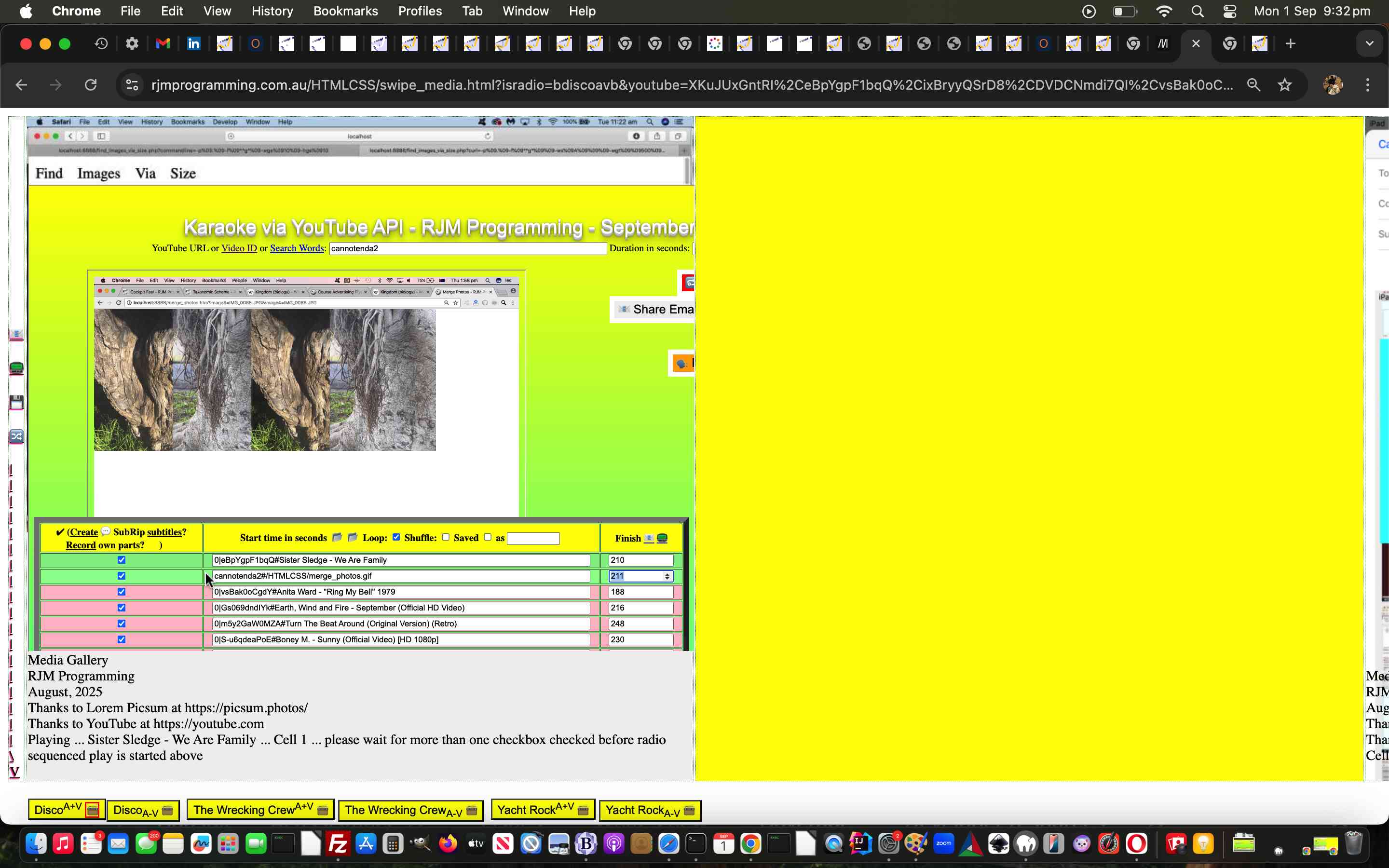
YouTube API Caller Phase Two Other Mimetypes Tutorial
Up until yesterday’s YouTube API Caller Phase Two Intermediate Buttons Tutorial phase two user media work established …
- (albeit, so far, restricted) audio media mimetypes presented in an HTML audio element … and …
- (albeit, so far, restricted) video media mimetypes presented in an HTML video element … while today we’re adding support for …
- (albeit, so far, restricted) image media mimetypes presented in an HTML img element … and …
- (albeit, so far, restricted) other mimetypes presented in an HTML iframe element
Not yet, but eventually, what we’re doing with the 3 hierarchies and hashtagging will be crucial for a sharing recipient to “see what you see”, and we needed tweaking of this to ensure the hashtagging order used corresponded to the order of user media (so far just URL) creations in those textboxes.
We were also correct worrying about if two such user media URLs appeared in a row, but fixed this within …
Previous relevant YouTube API Caller Phase Two Intermediate Buttons Tutorial is shown below.

YouTube API Caller Phase Two Intermediate Buttons Tutorial
Further to yesterday’s YouTube API Caller Phase Two Absolute URL Tutorial‘s three tier Tabular Single Row Image Gallery web application design …
Had we been letting middle child syndrome develop?
We’d not attended to a lot of the buttons to the right of the changed karaoke_youtube_api.htm inhouse YouTube video interfacer‘s webpages, in any serious way during this latest push. But the fact is, it is worth the effort, even in terms of them …
- helping better email share
- shore up recovery means should connections be lost during Radio Play
- help switch between video play and audio stream of video only play and vice versa modes of Radio Play
The thing is, in the three tier design, we’ve introduced a new top tier as far as this middle tier player is concerned. But we can tailor it to use those buttons differently, and we found the onmousedown and ontouchdown events related to those buttons often useful here, depending on conditions …
var mbmode=false, mbinter='';
var cbut="<br><div style='" + defidea + "'><div id='ddkaraoke' style='display:inline; visibility: hidden; '><input onclick=\"if (document.URL.indexOf('i0=') != -1) { location.href=itd(document.URL); } \" id='repeat' type='button' style='background-color:red;' value='Replay Karaoke Style YouTube Above'></input><br><input onclick=clickto(); id=karaokeshare value='Email Share to ' type='button'></input> <input style=width:60%; onblur=doto(this.value); type=text name=email id=karaokeemail value=></input></div><div id='dkaraoke' style='display:inline; visibility: hidden; '><input id='mousej' type='button' style='background-color:#f0f0f0; display:inline; visibility: hidden;' onclick=' mousebelowj(this);' value='Fill Table Below via Mouse Video Pauses Starting with '></input> <input id='mousei' type='button' style='background-color:#f5f5f5; display:inline; visibility: hidden;' onclick=' mousebelowi(this);' value='Fill Table Starting with 0 cell'></input> <input id='karaoke' onclick=\" mbmode=false; document.getElementById('ddkaraoke').style.visibility='visible'; if (document.URL.indexOf('i0=') != -1) { next=0; } queuenext();\" type='submit' style='background-color:orange;' value='Play Karaoke Style YouTube Via Entries Below'></input></div><div id='dkaraoke' style='display:inline; visibility: hidden; '></div></div>";
var cbutl="<div style='" + defidea + " height: 60px;'><div style=' " + defidea + " height: 60px;'><div id='dkaraoke' style=' display:inline; visibility: hidden; '><div style='" + defidea + "'><div style='" + defidea + "'><input id='karaoke' onclick=\" mbmode=false; document.getElementById('ddkaraoke').style.visibility='visible'; if (document.URL.indexOf('i0=') != -1) { next=0; } queuenext();\" type='submit' style='background-color:orange;' value='Play Karaoke Style YouTube Via Entries Below'></input></div></div></div><br><div id='ddkaraoke' style='margin-top:-100px; visibility: hidden; " + defidea + " '><div style='" + defidea + "'><div style='" + defidea + "'><input onclick=\"if (document.URL.indexOf('i0=') != -1) { location.href=itd(document.URL); } \" id='repeat' type='button' style='background-color:red;' value='Replay Karaoke Style YouTube Above'></input><br><input onclick=clickto(); id=karaokeshare value='Email Share to ' type='button'></input><input onblur=doto(this.value); type=text name=email id=karaokeemail value=></input></div></div></div></div></div><br><br>✔ (<a onclick=\" prearwo=window.open(this.getAttribute('data-href'),'_blank','top=' + eval(-400 + screen.height) + ',left=' + eval(-1050 + screen.width) + ',width=500,height=400'); setInterval(arwoaudioablook, 5000); }, 1500);\" data-target=_blank id=arecord title='Thanks to https://online-voice-recorder.com/#google_vignette ... if it works for your browser. If not, you can consider using a desktop microphone recorder app such as Mac OS X QuickTime Player as an alternative perhaps.' data-href='https://online-voice-recorder.com/#google_vignette'>Record</a> own parts? <input type=hidden id=justaudio" + bsuffis + " value=''></input><input style=visibility:hidden; onchanged='dorecord=!dorecord;' type=checkbox name=recown id=recown value='Record own parts?'></input>) ";
if (window.parent) {
if (('' + parent.document.URL + '&').indexOf('#http&') != -1 || ('' + parent.document.URL + '&').indexOf('isradio=') != -1) {
mbinter=" window.open(('' + parent.get_docurl()),'_top'); ";
if (('' + parent.document.URL + '&').indexOf('justaudio=y') != -1) {
cbut="<br><div style='" + defidea + "'><div id='ddkaraoke' style='display:inline; visibility: hidden; '><input onclick=\"if (document.URL.indexOf('i0=') != -1) { location.href=itd(document.URL); } \" id='repeat' type='button' style='background-color:red;' value='Replay Karaoke Style YouTube Above'></input><br><input onclick=clickto(); id=karaokeshare value='Email Share to ' type='button'></input> <input style=width:60%; onblur=doto(this.value); type=text name=email id=karaokeemail value=></input></div><div id='dkaraoke' style='display:inline; visibility: hidden; '><input id='mousej' type='button' style='background-color:#f0f0f0; display:inline; visibility: hidden;' onclick=' mousebelowj(this);' value='Fill Table Below via Mouse Video Pauses Starting with '></input> <input id='mousei' type='button' style='background-color:#f5f5f5; display:inline; visibility: hidden;' onclick=' mousebelowi(this);' value='Fill Table Starting with 0 cell'></input> <input id='karaoke' onclick=\" " + mbinter.replace(",",".replace('justaudio','audjustio'),") + " mbmode=false; document.getElementById('ddkaraoke').style.visibility='visible'; if (document.URL.indexOf('i0=') != -1) { next=0; } queuenext();\" type='submit' style='background-color:orange;' value='Play Karaoke Style YouTube Via Entries Below'></input></div><div id='dkaraoke' style='display:inline; visibility: hidden; '></div></div>";
cbutl="<div style='" + defidea + " height: 60px;'><div style=' " + defidea + " height: 60px;'><div id='dkaraoke' style=' display:inline; visibility: hidden; '><div style='" + defidea + "'><div style='" + defidea + "'><input id='karaoke' onclick=\" " + mbinter.replace(",",".replace('justaudio','audjustio'),") + " mbmode=false; document.getElementById('ddkaraoke').style.visibility='visible'; if (document.URL.indexOf('i0=') != -1) { next=0; } queuenext();\" type='submit' style='background-color:orange;' value='Play Karaoke Style YouTube Via Entries Below'></input></div></div></div><br><div id='ddkaraoke' style='margin-top:-100px; visibility: hidden; " + defidea + " '><div style='" + defidea + "'><div style='" + defidea + "'><input onclick=\"if (document.URL.indexOf('i0=') != -1) { location.href=itd(document.URL); } \" id='repeat' type='button' style='background-color:red;' value='Replay Karaoke Style YouTube Above'></input><br><input onclick=clickto(); id=karaokeshare value='Email Share to ' type='button'></input><input onblur=doto(this.value); type=text name=email id=karaokeemail value=></input></div></div></div></div></div><br><br>✔ (<a onclick=\" prearwo=window.open(this.getAttribute('data-href'),'_blank','top=' + eval(-400 + screen.height) + ',left=' + eval(-1050 + screen.width) + ',width=500,height=400'); setInterval(arwoaudioablook, 5000); }, 1500);\" data-target=_blank id=arecord title='Thanks to https://online-voice-recorder.com/#google_vignette ... if it works for your browser. If not, you can consider using a desktop microphone recorder app such as Mac OS X QuickTime Player as an alternative perhaps.' data-href='https://online-voice-recorder.com/#google_vignette'>Record</a> own parts? <input type=hidden id=justaudio" + bsuffis + " value=''></input><input style=visibility:hidden; onchanged='dorecord=!dorecord;' type=checkbox name=recown id=recown value='Record own parts?'></input>) ";
topbuturl=('' + parent.get_docurl()).replace('justaudio','audjustio');
mbinter=""; //mbinter=mbinter.replace(",",".replace('justaudio','audjustio'),");
setTimeout(function(){
if (document.getElementById('audioejkaraoke') || document.getElementById('repeat')) {
if (document.getElementById('audioejkaraoke')) {
document.getElementById('audioejkaraoke').type='button';
document.getElementById('audioejkaraoke').onmousedown=function(){ window.open(topbuturl,'_top'); };
document.getElementById('audioejkaraoke').ontouchdown=function(){ window.open(topbuturl,'_top'); };
}
if (document.getElementById('repeat')) {
document.getElementById('repeat').onmousedown=function(){ if (document.URL.indexOf('i0=') != -1) { window.open(topbuturl,'_top'); } };
document.getElementById('repeat').ontouchdown=function(){ if (document.URL.indexOf('i0=') != -1) { window.open(topbuturl,'_top'); } };
}
}
}, 12000);
} else {
cbut="<br><div style='" + defidea + "'><div id='ddkaraoke' style='display:inline; visibility: hidden; '><input onclick=\"if (document.URL.indexOf('i0=') != -1) { location.href=itd(document.URL); } \" id='repeat' type='button' style='background-color:red;' value='Replay Karaoke Style YouTube Above'></input><br><input onclick=clickto(); id=karaokeshare value='Email Share to ' type='button'></input> <input style=width:60%; onblur=doto(this.value); type=text name=email id=karaokeemail value=></input></div><div id='dkaraoke' style='display:inline; visibility: hidden; '><input id='mousej' type='button' style='background-color:#f0f0f0; display:inline; visibility: hidden;' onclick=' mousebelowj(this);' value='Fill Table Below via Mouse Video Pauses Starting with '></input> <input id='mousei' type='button' style='background-color:#f5f5f5; display:inline; visibility: hidden;' onclick=' mousebelowi(this);' value='Fill Table Starting with 0 cell'></input> <input id='karaoke' onclick=\" " + mbinter + " mbmode=false; document.getElementById('ddkaraoke').style.visibility='visible'; if (document.URL.indexOf('i0=') != -1) { next=0; } queuenext();\" type='submit' style='background-color:orange;' value='Play Karaoke Style YouTube Via Entries Below'></input></div><div id='dkaraoke' style='display:inline; visibility: hidden; '></div></div>";
cbutl="<div style='" + defidea + " height: 60px;'><div style=' " + defidea + " height: 60px;'><div id='dkaraoke' style=' display:inline; visibility: hidden; '><div style='" + defidea + "'><div style='" + defidea + "'><input id='karaoke' onclick=\" " + mbinter + " mbmode=false; document.getElementById('ddkaraoke').style.visibility='visible'; if (document.URL.indexOf('i0=') != -1) { next=0; } queuenext();\" type='submit' style='background-color:orange;' value='Play Karaoke Style YouTube Via Entries Below'></input></div></div></div><br><div id='ddkaraoke' style='margin-top:-100px; visibility: hidden; " + defidea + " '><div style='" + defidea + "'><div style='" + defidea + "'><input onclick=\"if (document.URL.indexOf('i0=') != -1) { location.href=itd(document.URL); } \" id='repeat' type='button' style='background-color:red;' value='Replay Karaoke Style YouTube Above'></input><br><input onclick=clickto(); id=karaokeshare value='Email Share to ' type='button'></input><input onblur=doto(this.value); type=text name=email id=karaokeemail value=></input></div></div></div></div></div><br><br>✔ (<a onclick=\" prearwo=window.open(this.getAttribute('data-href'),'_blank','top=' + eval(-400 + screen.height) + ',left=' + eval(-1050 + screen.width) + ',width=500,height=400'); setInterval(arwoaudioablook, 5000); }, 1500);\" data-target=_blank id=arecord title='Thanks to https://online-voice-recorder.com/#google_vignette ... if it works for your browser. If not, you can consider using a desktop microphone recorder app such as Mac OS X QuickTime Player as an alternative perhaps.' data-href='https://online-voice-recorder.com/#google_vignette'>Record</a> own parts? <input type=hidden id=justaudio" + bsuffis + " value=''></input><input style=visibility:hidden; onchanged='dorecord=!dorecord;' type=checkbox name=recown id=recown value='Record own parts?'></input>) ";
}
} else if (('' + top.document.URL + '&').indexOf('#http&') != -1 || ('' + top.document.URL + '&').indexOf('isradio=') != -1) {
mbinter=" window.open(('' + parent.get_docurl()),'_top'); ";
if (('' + parent.document.URL + '&').indexOf('justaudio=y') != -1) {
cbut="<br><div style='" + defidea + "'><div id='ddkaraoke' style='display:inline; visibility: hidden; '><input onclick=\"if (document.URL.indexOf('i0=') != -1) { location.href=itd(document.URL); } \" id='repeat' type='button' style='background-color:red;' value='Replay Karaoke Style YouTube Above'></input><br><input onclick=clickto(); id=karaokeshare value='Email Share to ' type='button'></input> <input style=width:60%; onblur=doto(this.value); type=text name=email id=karaokeemail value=></input></div><div id='dkaraoke' style='display:inline; visibility: hidden; '><input id='mousej' type='button' style='background-color:#f0f0f0; display:inline; visibility: hidden;' onclick=' mousebelowj(this);' value='Fill Table Below via Mouse Video Pauses Starting with '></input> <input id='mousei' type='button' style='background-color:#f5f5f5; display:inline; visibility: hidden;' onclick=' mousebelowi(this);' value='Fill Table Starting with 0 cell'></input> <input id='karaoke' onclick=\" " + mbinter.replace(",",".replace('justaudio','audjustio'),") + " mbmode=false; document.getElementById('ddkaraoke').style.visibility='visible'; if (document.URL.indexOf('i0=') != -1) { next=0; } queuenext();\" type='submit' style='background-color:orange;' value='Play Karaoke Style YouTube Via Entries Below'></input></div><div id='dkaraoke' style='display:inline; visibility: hidden; '></div></div>";
cbutl="<div style='" + defidea + " height: 60px;'><div style=' " + defidea + " height: 60px;'><div id='dkaraoke' style=' display:inline; visibility: hidden; '><div style='" + defidea + "'><div style='" + defidea + "'><input id='karaoke' onclick=\" " + mbinter.replace(",",".replace('justaudio','audjustio'),") + " mbmode=false; document.getElementById('ddkaraoke').style.visibility='visible'; if (document.URL.indexOf('i0=') != -1) { next=0; } queuenext();\" type='submit' style='background-color:orange;' value='Play Karaoke Style YouTube Via Entries Below'></input></div></div></div><br><div id='ddkaraoke' style='margin-top:-100px; visibility: hidden; " + defidea + " '><div style='" + defidea + "'><div style='" + defidea + "'><input onclick=\"if (document.URL.indexOf('i0=') != -1) { location.href=itd(document.URL); } \" id='repeat' type='button' style='background-color:red;' value='Replay Karaoke Style YouTube Above'></input><br><input onclick=clickto(); id=karaokeshare value='Email Share to ' type='button'></input><input onblur=doto(this.value); type=text name=email id=karaokeemail value=></input></div></div></div></div></div><br><br>✔ (<a onclick=\" prearwo=window.open(this.getAttribute('data-href'),'_blank','top=' + eval(-400 + screen.height) + ',left=' + eval(-1050 + screen.width) + ',width=500,height=400'); setInterval(arwoaudioablook, 5000); }, 1500);\" data-target=_blank id=arecord title='Thanks to https://online-voice-recorder.com/#google_vignette ... if it works for your browser. If not, you can consider using a desktop microphone recorder app such as Mac OS X QuickTime Player as an alternative perhaps.' data-href='https://online-voice-recorder.com/#google_vignette'>Record</a> own parts? <input type=hidden id=justaudio" + bsuffis + " value=''></input><input style=visibility:hidden; onchanged='dorecord=!dorecord;' type=checkbox name=recown id=recown value='Record own parts?'></input>) ";
topbuturl=('' + parent.get_docurl()).replace('justaudio','audjustio');
mbinter=""; //mbinter=mbinter.replace(",",".replace('justaudio','audjustio'),");
setTimeout(function(){
if (document.getElementById('audioejkaraoke') || document.getElementById('repeat')) {
if (document.getElementById('audioejkaraoke')) {
document.getElementById('audioejkaraoke').type='button';
document.getElementById('audioejkaraoke').onmousedown=function(){ window.open(topbuturl,'_top'); };
document.getElementById('audioejkaraoke').ontouchdown=function(){ window.open(topbuturl,'_top'); };
}
if (document.getElementById('repeat')) {
document.getElementById('repeat').onmousedown=function(){ if (document.URL.indexOf('i0=') != -1) { window.open(topbuturl,'_top'); } };
document.getElementById('repeat').ontouchdown=function(){ if (document.URL.indexOf('i0=') != -1) { window.open(topbuturl,'_top'); } };
}
}
}, 12000);
} else {
cbut="<br><div style='" + defidea + "'><div id='ddkaraoke' style='display:inline; visibility: hidden; '><input onclick=\"if (document.URL.indexOf('i0=') != -1) { location.href=itd(document.URL); } \" id='repeat' type='button' style='background-color:red;' value='Replay Karaoke Style YouTube Above'></input><br><input onclick=clickto(); id=karaokeshare value='Email Share to ' type='button'></input> <input style=width:60%; onblur=doto(this.value); type=text name=email id=karaokeemail value=></input></div><div id='dkaraoke' style='display:inline; visibility: hidden; '><input id='mousej' type='button' style='background-color:#f0f0f0; display:inline; visibility: hidden;' onclick=' mousebelowj(this);' value='Fill Table Below via Mouse Video Pauses Starting with '></input> <input id='mousei' type='button' style='background-color:#f5f5f5; display:inline; visibility: hidden;' onclick=' mousebelowi(this);' value='Fill Table Starting with 0 cell'></input> <input id='karaoke' onclick=\" " + mbinter + " mbmode=false; document.getElementById('ddkaraoke').style.visibility='visible'; if (document.URL.indexOf('i0=') != -1) { next=0; } queuenext();\" type='submit' style='background-color:orange;' value='Play Karaoke Style YouTube Via Entries Below'></input></div><div id='dkaraoke' style='display:inline; visibility: hidden; '></div></div>";
cbutl="<div style='" + defidea + " height: 60px;'><div style=' " + defidea + " height: 60px;'><div id='dkaraoke' style=' display:inline; visibility: hidden; '><div style='" + defidea + "'><div style='" + defidea + "'><input id='karaoke' onclick=\" " + mbinter + " mbmode=false; document.getElementById('ddkaraoke').style.visibility='visible'; if (document.URL.indexOf('i0=') != -1) { next=0; } queuenext();\" type='submit' style='background-color:orange;' value='Play Karaoke Style YouTube Via Entries Below'></input></div></div></div><br><div id='ddkaraoke' style='margin-top:-100px; visibility: hidden; " + defidea + " '><div style='" + defidea + "'><div style='" + defidea + "'><input onclick=\"if (document.URL.indexOf('i0=') != -1) { location.href=itd(document.URL); } \" id='repeat' type='button' style='background-color:red;' value='Replay Karaoke Style YouTube Above'></input><br><input onclick=clickto(); id=karaokeshare value='Email Share to ' type='button'></input><input onblur=doto(this.value); type=text name=email id=karaokeemail value=></input></div></div></div></div></div><br><br>✔ (<a onclick=\" prearwo=window.open(this.getAttribute('data-href'),'_blank','top=' + eval(-400 + screen.height) + ',left=' + eval(-1050 + screen.width) + ',width=500,height=400'); setInterval(arwoaudioablook, 5000); }, 1500);\" data-target=_blank id=arecord title='Thanks to https://online-voice-recorder.com/#google_vignette ... if it works for your browser. If not, you can consider using a desktop microphone recorder app such as Mac OS X QuickTime Player as an alternative perhaps.' data-href='https://online-voice-recorder.com/#google_vignette'>Record</a> own parts? <input type=hidden id=justaudio" + bsuffis + " value=''></input><input style=visibility:hidden; onchanged='dorecord=!dorecord;' type=checkbox name=recown id=recown value='Record own parts?'></input>) ";
}
}
}
var cbutm="<div style='" + defidea + " height: 60px;'><div id='dkaraokem' style='display:inline; visibility: hidden; '><input id='mousei' type='button' style='background-color:#f5f5f5; display:inline; visibility: hidden;' onclick=' mousebelowi(this);' value='Fill Table Below via Mouse Video Pauses'></input></div></div><br>Start time in seconds <span id=nm style='display:none;'>(negative means you will be singing or Prefix by Audio file URL or YouTube ID delimited by :)</span>";
var cbutr="<div style='" + defidea + " height: 60px;'><div id='dkaraoker' style='display:inline; visibility: hidden; '> <input id='mousej' type='button' style=' background-color:#f0f0f0; display:inline; visibility: hidden;' onclick=' mousebelowj(this);' value='Fill Table Starting with '></input></div></div><br><span style=text-align:right;width:100%;>Finish</span>";
var audiobut='';
if ((mbinter != '' && ('' + parent.document.URL).indexOf('justaudio=y') != -1) || ((documentURL + '&' + asuffis).indexOf('justaudio=&') != -1 && (documentURL.indexOf('youtube_duration=&') == -1 && documentURL.indexOf('youtube_duration=') != -1) && documentURL.indexOf('youtubeid=') != -1 && documentURL.indexOf('emoji=') != -1)) {
audiobut=('<input class="emoji" id="audioejkaraoke" onclick=" ' + mbinter + ' document.getElementById(`myiframe`).style.marginTop=`0px`; document.getElementById(`myiframe`).style.opacity=`1`; document.getElementById(`myiframe`).style.filter="invert(0)"; this.style.display=`none`; " type="submit" style="background-color: orange; visibility: visible;" value="' + String.fromCodePoint(128249) + ' Play Video as below" title="Play Karaoke Style YouTube Video Via Entries Below">').replace(/\`/g,"'");
} else if (('' + parent.document.URL).indexOf('justaudio=y') != -1) {
audiobut=('<input class="emoji" id="audioejkaraoke" onclick=" document.getElementById(`justaudio`).name=`justaudio`; ' + mbinter.replace(",",".replace('?','?justaudio=y&'),") + ' mbmode=false; document.getElementById(`ddejkaraoke`).style.visibility=`visible`; if (document.URL.indexOf(`i0=`) != -1) { next=0; } isendof=ieo; queuenext(); " type="submit" style="background-color: orange; visibility: visible;" value="' + String.fromCodePoint(128483) + ' Play Video as below" title="Play Karaoke Style YouTube Video Via Entries Below">').replace(/\`/g,"'");
} else {
audiobut=('<input class="emoji" id="audioejkaraoke" onclick=" document.getElementById(`justaudio`).name=`justaudio`; ' + mbinter.replace(",",".replace('?','?justaudio=y&'),") + ' mbmode=false; document.getElementById(`ddejkaraoke`).style.visibility=`visible`; if (document.URL.indexOf(`i0=`) != -1) { next=0; } isendof=ieo; queuenext(); " type="submit" style="background-color: orange; visibility: visible;" value="' + String.fromCodePoint(128483) + ' Play Audio as below" title="Play Karaoke Style YouTube Audio Via Entries Below">').replace(/\`/g,"'");
}
… helping out in the changed swipe_media.html Tabular Single Row Image Gallery web application “Radio Play” mode of use.
Previous relevant YouTube API Caller Phase Two Absolute URL Tutorial is shown below.
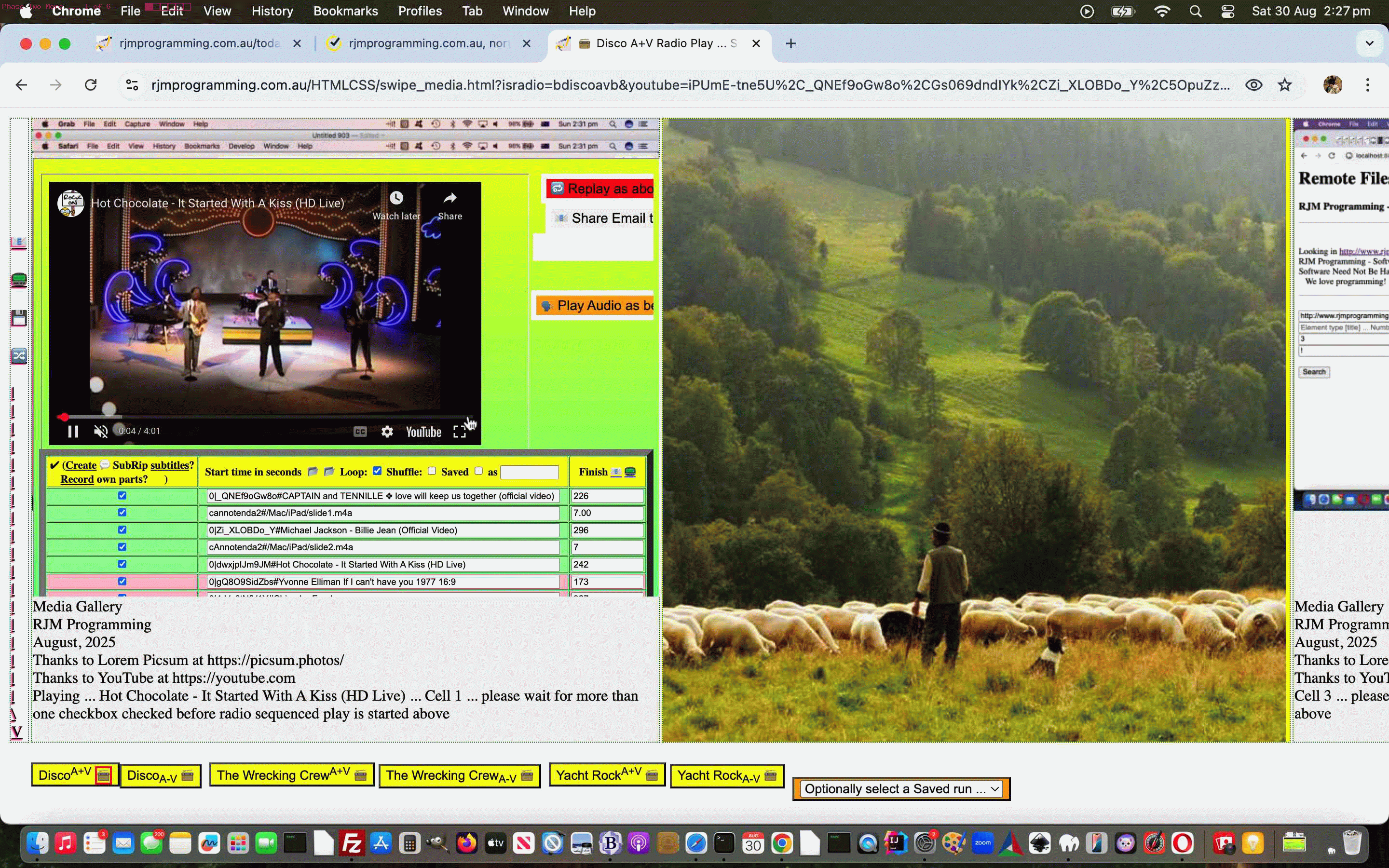
YouTube API Caller Phase Two Absolute URL Tutorial
Onto yesterday’s YouTube API Caller Other Media Playlist Regarding Tutorial it’s taken a long time, even for the conditional blurb below to crystallize, but …
- regarding testing we only did, so far, on non-mobile regarding Radio Play interspersing of YouTube media video plays with non-YouTube ones, so far …
- regarding users entering their own URLs into the textboxes next to the left hand checkboxes during Radio Play usage …
- regarding user entered absolute or relative URLs (but not data URIs yet) …
- pointing to audio or video media mimetype data (so far)
… we finally think we have a presentable web application scenario, worth putting into the mix.
This concerns the Tabular Single Row Image Gallery web application in “Radio Play” mode of use helped out by the changed karaoke_youtube_api.htm inhouse YouTube video interfacer in turn helped out by the modified stop_start_youtube.html YouTube API caller.
Pretty obviously, more to do, and more to shore up, but encouraging signs it’s all possible, this interspersing of YouTube media video plays with non-YouTube ones!
Previous relevant YouTube API Caller Other Media Playlist Regarding Tutorial is shown below.

YouTube API Caller Other Media Playlist Regarding Tutorial
Further to yesterday’s YouTube API Caller Other Media Playlist Compilation Tutorial it’s not going to cut the mustard with as many users …
… if you forget to put front and center what it is the user has given you as a piece of their information …
… rather than what some of us (cough, cough) can tend to do as software developers, and bury this in the data out of sight.
What could be better than yesterday’s allowing via emoji 🔀 button for Playlist creation via 11 character YouTube video ID list, albeit “some people’s cup of tea”, than to place the whole …
Playlist Thaing
… back into a user driven chance to control matters? In other words …
function createplaylist(insvalo) {
var tdsare=[], itds=0, itdone=false;;
var oklast=['A','E','I','M','Q','U','Y','c','g','k','o','s','w','0','4','8'];
var argshuf='';
var plist=prompt('Enter YouTube 11 character code video (comma separated) or audio stream only of video (semicolon separated) list to Radio Play (and add ! to start in shuffle mode) ... or a YouTube Search String basis to create a playlist via a Radio' + String.fromCodePoint(128251) + '? button to activate, later.', '');
if (plist != null) {
if (plist.trim() != '') {
if (plist.trim().indexOf(' ') != -1 || eval('' + plist.trim().split(',')[0].split(';')[0].length) != 11 || oklast.indexOf(plist.trim().split(',')[0].split(';')[0].slice(-1)) == -1) {
tdsare=document.getElementsByTagName('td');
for (itds=0; itds<tdsare.length; itds++) {
if (!itdone && tdsare[itds].innerHTML == '' && ('' + tdsare[itds].id) != 'td0001') {
itdone=true;
tdsare[itds].innerHTML='<iframe style="width:100%;height:100%;" id=karsearch name=karsearch src="/HTMLCSS/karaoke_youtube_api.htm?youtubeid=++++++++++++' + encodeURIComponent(plist.trim()) + '&minimize=y&youtube_duration=&email=&emoji=on&clickcheck=y"></iframe>';
tdsare[itds].scrollIntoView();
}
}
} else {
if (plist.replace(/\!$/g,'') != plist) { argshuf='&shuffle=y'; }
if (plist.indexOf(';') != -1 && plist.indexOf(',') == -1) {
window.open('./swipe_media.html?isradio=y' + argshuf + '&audioyoutube=' + encodeURIComponent(extraatendmaybe(plist.replace(/\;/g,',').replace(/\!$/g,''),'isradio=y' + argshuf)),'_blank');
} else {
window.open('./swipe_media.html?isradio=y' + argshuf + '&youtube=' + encodeURIComponent(extraatendmaybe(plist.replace(/\;/g,',').replace(/\!$/g,''),'isradio=y' + argshuf)),'_blank');
}
}
}
}
}
… and should the user go on to remember that playlist, what they entered as a YouTube Search String basis gets remembered in Radio Play webpage titling (and hence, in web browser window name lists). And the user can see how the playlist was created, especially if they named their recallable playlist well, in a more transparent way in the changed swipe_media.html Tabular Single Row Image Gallery web application “Radio Play” mode of use, now allowing via emoji 🔀 button for Playlist creation via 11 character YouTube video ID lists, all helped out by the changed karaoke_youtube_api.htm inhouse YouTube video interfacer.
Some Vikki Carr magic, anyone?!
Previous relevant YouTube API Caller Other Media Playlist Compilation Tutorial is shown below.
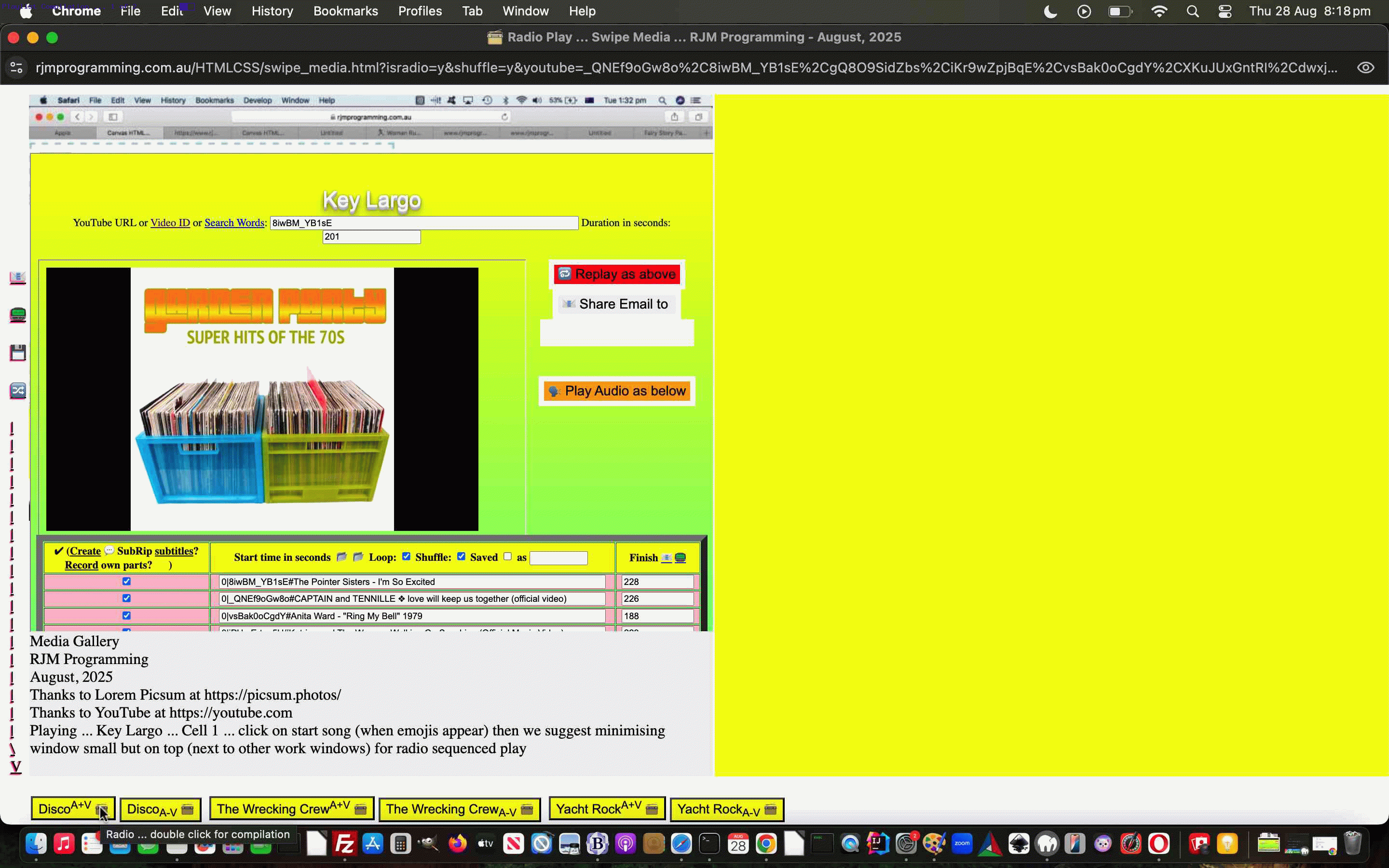
YouTube API Caller Other Media Playlist Compilation Tutorial
Onto yesterday’s YouTube API Caller Other Media Playlist Recall Tutorial …
- work has progressed on Phase Two integrations, sideways then forwards, and “getting there” … but for the meantime there are other features we want here …
- like a way to compile songs from our three featured music ideas into an immediately shuffled longer playlist …
… via double clicks on Radio Play 📻 emojis, as per …
var independent=true, didothers=false;
function triplewhammy() {
independent=false;
location.hash='#independent=false';
argshuffle='&shuffle=y';
prefix='isradio=y' + argshuffle + '&';
dodisco('ISRADIO=BDISCOAVB&');
setTimeout(function(){
prefix='isradio=y' + argshuffle + '&';
dowc('ISRADIO=BWCAVB&');
}, 3000);
setTimeout(function(){
prefix='isradio=y' + argshuffle + '&';
doyr('ISRADIO=BYRAVB&');
}, 7000);
setTimeout(function(){ independent=true; }, 37000);
}
function split_embed(iois) {
var iso=-1;
if (('' + location.hash).indexOf('independent') != -1) { independent=false; iso=0; }
var aconto = (iois.contentWindow || iois.contentDocument);
if (aconto != null) {
if (aconto.document) { aconto = aconto.document; }
if (aconto.body != null) {
var tyembeds=aconto.body.innerHTML.split('/embed/');
if (eval('' + tyembeds.length) <= 1) { setTimeout(function(){ checkiflater(document.getElementById(iois.id)); }, 6000); } else {
for (var it=1; it<tyembeds.length; it++) {
if (iso < 0 || iso < 9) {
if (iso >= 0) { iso++ }
if (ytlist.trim() == '') {
ytlist+='' + tyembeds[it].substring(0,11);
} else {
ytlist+=',' + tyembeds[it].substring(0,11);
}
}
}
if (ytlist != '') {
if (prefix.indexOf('isradio=') != -1 && !navigator.userAgent.match(/Android|BlackBerry|iPhone|iPad|iPod|Opera Mini|IEMobile/i)) {
if (ytwo) {
if (!ytwo.closed) {
ytwo.close();
ytwo=null;
}
ytwo=null;
}
if (!independent) {
prefix='isradio=y' + argshuffle + '&';
}
if (!didothers) {
ytwo=window.open(document.URL.split('?')[0].split('#')[0] + '?' + prefix + 'youtube=' + encodeURIComponent(extraatendmaybe(ytlist,prefix).trim()),'_blank','top=0,left=0,width=' + screen.width + ',height=' + screen.height);
} else {
setTimeout(function(){
ytwo=window.open(document.URL.split('?')[0].split('#')[0] + '?' + prefix + 'youtube=' + encodeURIComponent(extraatendmaybe(ytlist,prefix).trim()),'_blank','top=0,left=0,width=' + screen.width + ',height=' + screen.height);
}, 4000);
}
} else {
if (!independent) {
prefix='isradio=y' + argshuffle + '&';
}
if (!didothers) {
location.href=document.URL.split('?')[0].split('#')[0] + '?' + prefix + 'youtube=' + encodeURIComponent(extraatendmaybe(ytlist,prefix).trim());
} else {
setTimeout(function(){
location.href=document.URL.split('?')[0].split('#')[0] + '?' + prefix + 'youtube=' + encodeURIComponent(extraatendmaybe(ytlist,prefix).trim());
}, 4000);
}
//}
}
}
}
}
}
}
function split_embed_two(iois) {
//didothers=true;
var iso=-1;
if (('' + location.hash).indexOf('independent') != -1) { independent=false; iso=0; }
var aconto = (iois.contentWindow || iois.contentDocument);
if (aconto != null) {
if (aconto.document) { aconto = aconto.document; }
if (aconto.body != null) {
var tyembeds=aconto.body.innerHTML.split('/embed/');
if (eval('' + tyembeds.length) <= 1) { setTimeout(function(){ checkiflater(document.getElementById(iois.id)); }, 6000); } else {
for (var it=1; it<tyembeds.length; it++) {
if (iso < 0 || iso < 9) {
if (iso >= 0) { iso++ }
if (ytlist.trim() == '') {
ytlist+='' + tyembeds[it].substring(0,11);
} else {
ytlist+=',' + tyembeds[it].substring(0,11);
}
}
}
if (ytlist != '') {
if (prefix.indexOf('isradio=') != -1 && !navigator.userAgent.match(/Android|BlackBerry|iPhone|iPad|iPod|Opera Mini|IEMobile/i)) {
if (ytwo) {
if (!ytwo.closed) {
ytwo.close();
ytwo=null;
}
ytwo=null;
}
if (1 == 5) {
ytwo=window.open(document.URL.split('?')[0].split('#')[0] + '?' + prefix + 'youtube=' + encodeURIComponent(extraatendmaybe(ytlist,prefix).trim()),'_blank','top=0,left=0,width=' + screen.width + ',height=' + screen.height);
}
} else {
if (1 == 5) {
location.href=document.URL.split('?')[0].split('#')[0] + '?' + prefix + 'youtube=' + encodeURIComponent(extraatendmaybe(ytlist,prefix).trim());
}
}
}
}
}
}
}
function split_embed_three(iois) {
//didothers=true;
var iso=-1;
if (('' + location.hash).indexOf('independent') != -1) { independent=false; iso=0; }
var aconto = (iois.contentWindow || iois.contentDocument);
if (aconto != null) {
if (aconto.document) { aconto = aconto.document; }
if (aconto.body != null) {
var tyembeds=aconto.body.innerHTML.split('/embed/');
if (eval('' + tyembeds.length) <= 1) { setTimeout(function(){ checkiflater(document.getElementById(iois.id)); }, 6000); } else {
for (var it=1; it<tyembeds.length; it++) {
if (iso < 0 || iso < 9) {
if (iso >= 0) { iso++ }
if (ytlist.trim() == '') {
ytlist+='' + tyembeds[it].substring(0,11);
} else {
ytlist+=',' + tyembeds[it].substring(0,11);
}
}
}
if (ytlist != '') {
if (prefix.indexOf('isradio=') != -1 && !navigator.userAgent.match(/Android|BlackBerry|iPhone|iPad|iPod|Opera Mini|IEMobile/i)) {
if (ytwo) {
if (!ytwo.closed) {
ytwo.close();
ytwo=null;
}
ytwo=null;
}
if (1 == 5) {
ytwo=window.open(document.URL.split('?')[0].split('#')[0] + '?' + prefix + 'youtube=' + encodeURIComponent(extraatendmaybe(ytlist,prefix).trim()),'_blank','top=0,left=0,width=' + screen.width + ',height=' + screen.height);
}
} else {
if (1 == 5) {
location.href=document.URL.split('?')[0].split('#')[0] + '?' + prefix + 'youtube=' + encodeURIComponent(extraatendmaybe(ytlist,prefix).trim());
}
}
}
}
}
}
}
function dodisco(dwhat) {
if (independent) {
if (prefix.indexOf('shuffle=') == -1) { prefix=dwhat; }
document.getElementById('spareif').src='/HTMLCSS/disco_version.html?rand=' + Math.floor(Math.random() * 1987865);
} else if (dwhat == dwhat.toUpperCase()) {
if (ytlist == '') { ytlist=' '; }
document.getElementById('spareifthree').src='/HTMLCSS/disco_version.html?rand=' + Math.floor(Math.random() * 1987865);
//document.getElementById('spareiftwo').src='/HTMLCSS/the_wrecking_crew.html?rand=' + Math.floor(Math.random() * 1987865);
//document.getElementById('spareif').src='/HTMLCSS/yacht_rock.html?rand=' + Math.floor(Math.random() * 1987865);
}
}
function dowc(dwhat) {
if (independent) {
if (prefix.indexOf('shuffle=') == -1) { prefix=dwhat; }
document.getElementById('spareif').src='/HTMLCSS/the_wrecking_crew.html?rand=' + Math.floor(Math.random() * 1987865);
} else if (dwhat == dwhat.toUpperCase()) {
if (ytlist == '') { ytlist=' '; }
//document.getElementById('spareifthree').src='/HTMLCSS/disco_version.html?rand=' + Math.floor(Math.random() * 1987865);
document.getElementById('spareiftwo').src='/HTMLCSS/the_wrecking_crew.html?rand=' + Math.floor(Math.random() * 1987865);
//document.getElementById('spareif').src='/HTMLCSS/yacht_rock.html?rand=' + Math.floor(Math.random() * 1987865);
}
}
function doyr(dwhat) {
if (independent) {
if (prefix.indexOf('shuffle=') == -1) { prefix=dwhat; }
document.getElementById('spareif').src='/HTMLCSS/yacht_rock.html?rand=' + Math.floor(Math.random() * 1987865);
} else if (dwhat == dwhat.toUpperCase()) {
if (ytlist == '') { ytlist=' '; }
//document.getElementById('spareifthree').src='/HTMLCSS/disco_version.html?rand=' + Math.floor(Math.random() * 1987865);
//document.getElementById('spareiftwo').src='/HTMLCSS/the_wrecking_crew.html?rand=' + Math.floor(Math.random() * 1987865);
document.getElementById('spareif').src='/HTMLCSS/yacht_rock.html?rand=' + Math.floor(Math.random() * 1987865);
}
}
… in the changed swipe_media.html Tabular Single Row Image Gallery web application “Radio Play” mode of use, now allowing via emoji 🔀 button for Playlist creation via 11 character YouTube video ID lists, all helped out by the changed karaoke_youtube_api.htm inhouse YouTube video interfacer.
Previous relevant YouTube API Caller Other Media Playlist Recall Tutorial is shown below.
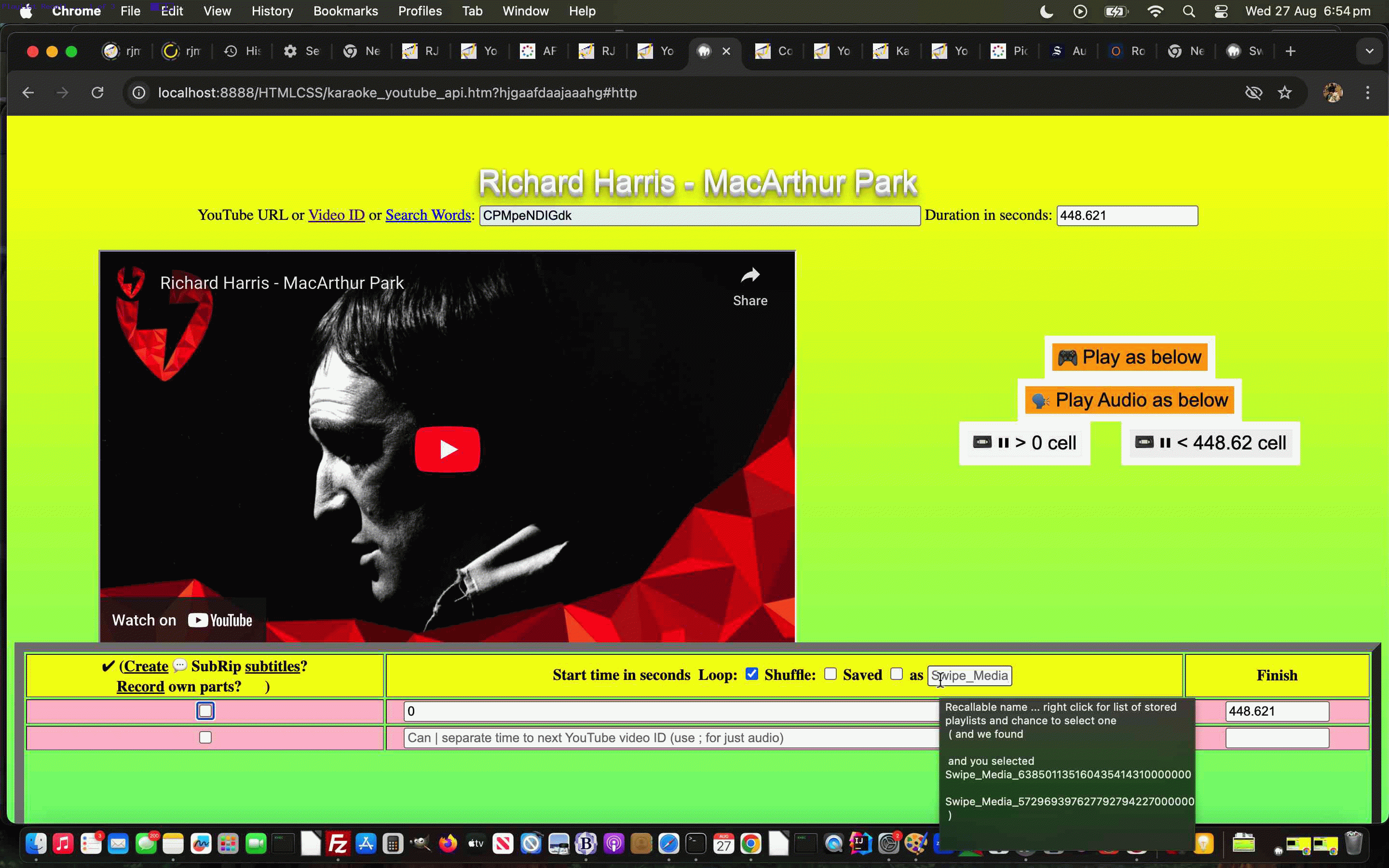
YouTube API Caller Other Media Playlist Recall Tutorial
Onto yesterday’s YouTube API Caller Other Media Playlist Creation Tutorial …
- work has progressed on Phase Two integrations, forwards, and “getting there” … but for the meantime there are other features we want here …
- like more ways to recall user determined YouTube derived playlists and we found that …
… the changed karaoke_youtube_api.htm inhouse YouTube video interfacer‘s playlist recall functionality needed this overhaul …
function hoverplaylist(tboxrelo, doprompt) {
var p_ans='';
perused_list='';
Object.keys(window.localStorage).forEach(function(key){
if (('' + key).indexOf('tube') == 0) {
if (perused_list == '') { perused_list=tboxrelo.title.split(String.fromCharCode(10))[0] + String.fromCharCode(10) + ' ( and we found )'; }
perused_list=perused_list.replace(' )', ' ' + String.fromCharCode(10) + key.replace('tube_','').replace(/\-/g,' ') + String.fromCharCode(10) + ' )');
} else if (('' + key).indexOf('karaoke_youtube_api-') == 0) {
if (perused_list == '') { perused_list=tboxrelo.title.split(String.fromCharCode(10))[0] + String.fromCharCode(10) + ' ( and we found )'; }
perused_list=perused_list.replace(' )', ' ' + String.fromCharCode(10) + key.replace('karaoke_youtube_api-','').replace(/\-/g,' ') + String.fromCharCode(10) + ' )');
}
});
if (perused_list != '') { tboxrelo.title=perused_list; p_ans=null; if (doprompt) { p_ans=prompt(perused_list,perused_list); } if (p_ans != null) { if (p_ans != perused_list) { if (document.getElementById('namethechk') && document.URL.indexOf('#http') != -1 && !document.getElementById('namechk').checked) { document.getElementById('namethechk').value=p_ans; saveplaylist(); } } } }
}
function saveplaylist() {
if (document.getElementById('namechk') && document.getElementById('namethechk') && document.URL.indexOf('#http') != -1) {
if (!document.getElementById('namechk').checked && document.getElementById('namethechk').value.trim() != '') {
if (document.getElementById('namethechk').value.indexOf('tube_') == 0 || document.getElementById('namethechk').value.indexOf('karaoke_youtube_api-') == 0) {
if (('' + window.localStorage.getItem(document.getElementById('namethechk').value.replace(/\ /g, '-'))).replace(/^null/g,'').replace(/^undefined/g,'') != '') {
window.open(decodeURIComponent(window.localStorage.getItem(document.getElementById('namethechk').value.replace(/\ /g, '-'))), '_blank', 'top=100,left=100,width=800,height=800');
document.getElementById('namethechk').placeholder=document.getElementById('namethechk').value;
document.getElementById('namethechk').title=document.getElementById('namethechk').title.replace(document.getElementById('namethechk').value, String.fromCharCode(10) + ' and you selected ' + String.fromCharCode(10) + document.getElementById('namethechk').value);
document.getElementById('namethechk').value='';
}
} else if (('' + window.localStorage.getItem('karaoke_youtube_api-' + document.getElementById('namethechk').value.replace(/\ /g, '-'))).replace(/^null/g,'').replace(/^undefined/g,'') != '') {
window.open(decodeURIComponent(window.localStorage.getItem('karaoke_youtube_api-' + document.getElementById('namethechk').value.replace(/\ /g, '-'))), '_blank', 'top=100,left=100,width=800,height=800');
document.getElementById('namethechk').placeholder=document.getElementById('namethechk').value;
document.getElementById('namethechk').title=document.getElementById('namethechk').title.replace(document.getElementById('namethechk').value, String.fromCharCode(10) + ' and you selected ' + String.fromCharCode(10) + document.getElementById('namethechk').value);
document.getElementById('namethechk').value='';
} else if (('' + window.localStorage.getItem('tube_' + document.getElementById('namethechk').value.replace(/\ /g, '-'))).replace(/^null/g,'').replace(/^undefined/g,'') != '') {
window.open(decodeURIComponent(window.localStorage.getItem('tube_' + document.getElementById('namethechk').value.replace(/\ /g, '-'))), '_blank', 'top=100,left=100,width=800,height=800');
document.getElementById('namethechk').placeholder=document.getElementById('namethechk').value;
document.getElementById('namethechk').title=document.getElementById('namethechk').title.replace(document.getElementById('namethechk').value, String.fromCharCode(10) + ' and you selected ' + String.fromCharCode(10) + document.getElementById('namethechk').value);
document.getElementById('namethechk').value='';
}
} else if (document.getElementById('namechk').checked && document.getElementById('namethechk').value.trim() != '') {
if (('' + window.localStorage.getItem('karaoke_youtube_api-' + document.getElementById('namethechk').value.replace(/\ /g, '-'))).replace(/^null/g,'').replace(/^undefined/g,'') != '') {
window.localStorage.removeItem('karaoke_youtube_api-' + document.getElementById('namethechk').value.replace(/\ /g, '-'));
}
if (('' + window.localStorage.getItem('tube_' + document.getElementById('namethechk').value.replace(/\ /g, '-'))).replace(/^null/g,'').replace(/^undefined/g,'') != '') {
window.localStorage.removeItem('tube_' + document.getElementById('namethechk').value.replace(/\ /g, '-'));
}
var wpd='';
if (window.parent) {
if (parent.document.URL.indexOf('/swipe_media.htm') != -1) {
wpd=parent.get_doc();
}
}
if (wpd != '') {
window.localStorage.setItem('tube_' + document.getElementById('namethechk').value.replace(/\ /g, '-'), encodeURIComponent(decodeURIComponent(wpd)));
} else if (docURL != document.URL || ('' + document.URL + 's').replace(/\#https/g,'') != ('' + document.URL + 's')) {
window.localStorage.setItem('karaoke_youtube_api-' + document.getElementById('namethechk').value.replace(/\ /g, '-'), encodeURIComponent(decodeURIComponent(docURL)));
} else {
window.localStorage.setItem('karaoke_youtube_api-' + document.getElementById('namethechk').value.replace(/\ /g, '-'), encodeURIComponent(decodeURIComponent(document.URL.split('#')[1]).split('&loop=')[0].split('&name=')[0] + '#' + document.URL.split('#')[1]));
}
}
}
}
… and feeding this into the workings of the changed swipe_media.html Tabular Single Row Image Gallery web application “Radio Play” mode of use.
Previous relevant YouTube API Caller Other Media Playlist Creation Tutorial is shown below.
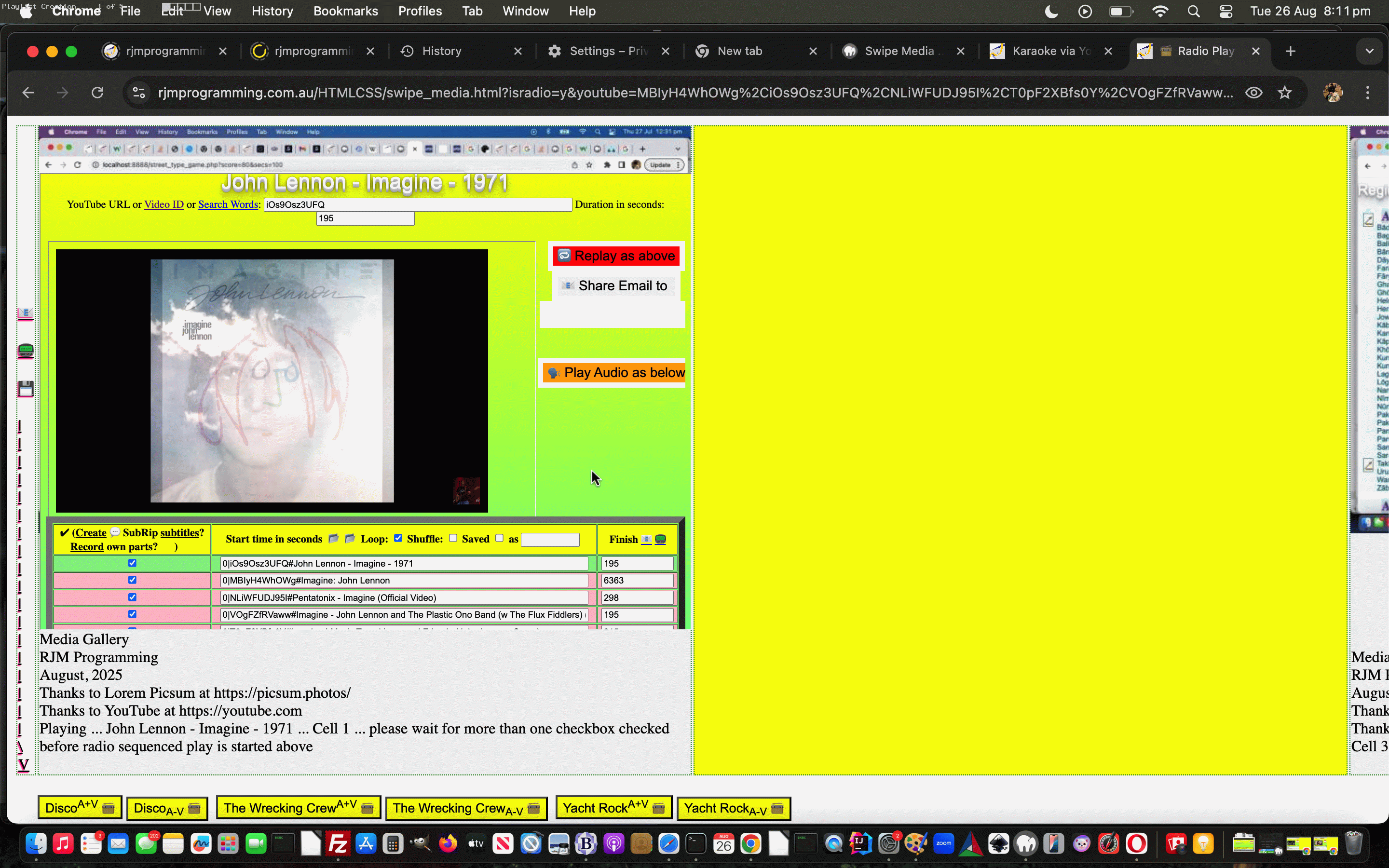
YouTube API Caller Other Media Playlist Creation Tutorial
Onto the recent YouTube API Caller Other Media Phase Two Iframe Tutorial …
- work has progressed on Phase Two integrations, forwards, and “getting there” … but for the meantime there are other features we want here …
- like more ways to create user determined YouTube derived playlists and the best place we’ve found for this is via
… the changed karaoke_youtube_api.htm inhouse YouTube video interfacer‘s YouTube Search capabilities.
These searches off that top textbox can lead to a …
- (user should select) multi-select dropdown … off which the user could select a number of YouTube videos (without having to know their 11 character IDs) … and then …
- click the new Radio📻? button … to hook in with …
- the changed swipe_media.html Tabular Single Row Image Gallery web application “Radio Play” mode of use
Stay tuned for more ways to create playlists!
Previous relevant YouTube API Caller Other Media Phase Two Iframe Tutorial is shown below.
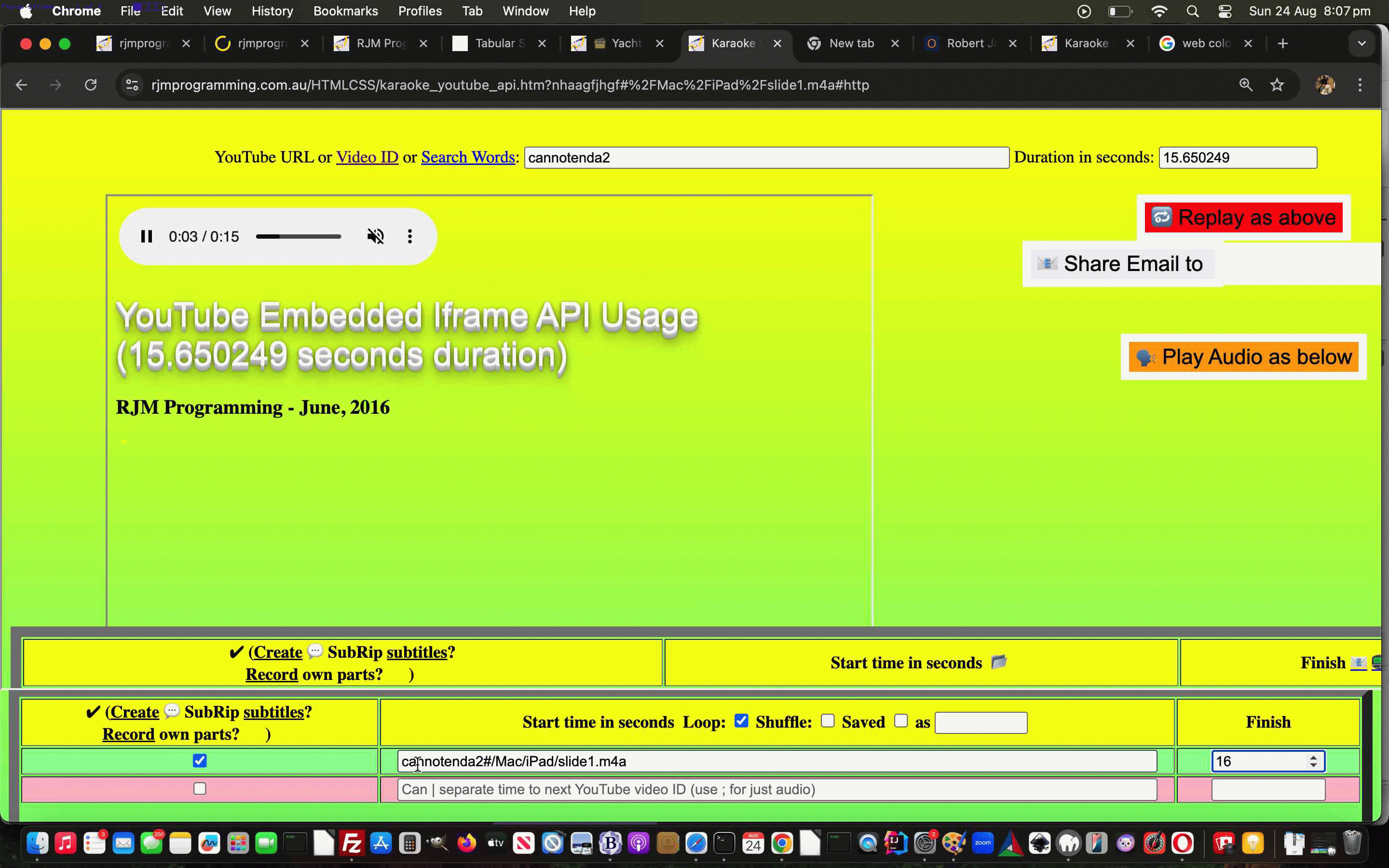
YouTube API Caller Other Media Phase Two Iframe Tutorial
Yesterday’s YouTube API Caller Other Media Phase Two Interfacing Tutorial featured the use of …
- popup windows … much maligned … so if there is a way we can transfer to the less maligned …
- iframe
… keeping the work within the one window, that would be good, yes? Happily, yes is the go, and with little bother too, with referencing code structure like …
function feedoff(intr, compduris, comptitleis) {
var iqw=0;
if (window.parent != window.self) {
if (window.parent.window.opener) {
//alert('vHere ' + ivid);
iqw=0;
while (parent.document.getElementById('i' + iqw)) {
if (parent.document.getElementById('i' + iqw).value.indexOf('cannotenda2') != -1) {
vidarrv[iqw]='cannotenda2';
}
iqw++;
}
//alert('Here ' + ivid);
window.parent.window.opener.nonytopen(ivid, compduris, comptitleis);
} else {
iqw=0;
while (parent.document.getElementById('i' + iqw)) {
if (parent.document.getElementById('i' + iqw).value.indexOf('cannotenda2') != -1) {
vidarrv[iqw]='cannotenda2';
}
iqw++;
}
//alert('gere ' + ivid);
parent.nonytopen(ivid, compduris, comptitleis);
}
//} else {
// alert('therE');
}
return intr;
}
function localended(avo) {
var iqw=0;
if (window.parent) {
if (parent.document.URL.indexOf('tbox=') != -1) {
if (window.parent.window.opener) {
iqw=0;
while (parent.document.getElementById('i' + iqw)) {
if (parent.document.getElementById('i' + iqw).value.indexOf('cannotenda2') != -1) {
vidarrv[iqw]='cannotenda2';
}
iqw++;
}
setTimeout(function() { parent.window.opener.document.getElementById('j' + parent.document.URL.split('tbox=')[1].split('&')[0]).value='' + Math.ceil(eval('' + contdurs[whichnonyt(eval(-1 + contstarts.length))])) + '.00'; parent.document.getElementById('mytopspan').innerHTML='You can close me now ... ' + parent.document.getElementById('mytopspan').innerHTML; parent.window.opener.focus(); parent.window.opener.backtobase(); parent.window.opener.focus(); duration=-1; aminytnon=false; player=altplayer; }, 1000);
//window.close();
}
} else if (parent.document.URL.indexOf('/karaoke_youtube_api.htm') != -1) {
iqw=0;
while (parent.document.getElementById('i' + iqw)) {
if (parent.document.getElementById('i' + iqw).value.indexOf('cannotenda2') != -1) {
vidarrv[iqw]='cannotenda2';
}
iqw++;
}
if (('' + parent.document.URL + 's').replace(/\#https/g,'') != ('' + parent.document.URL + 's')) {
aminytnon=false;
player=altplayer;
duration=-9999;
playingvideo(); //setTimeout(playingvideo, 800);
}
} else if ('blog' != 'blog') {
parent.document.title='Finished ' + avo.outerHTML.substring(1).split(' ')[0];
}
}
}
… essentially unaffected by the pretty dramatic change of window usage configuration. Cute, huh?! But how is this made to happen? It’s really simple, really, as the second parameter of window.open can point to an iframe name attribute …
<iframe name=radioif id=radioif data-laterclick="" data-position=relative data-top=0 data-left=0 data-width=0 data-height=0 data-z=-999 style=display:none; src='//www.rjmprogramming.com.au/HTMLCSS/karaoke_youtube_api.htm#http'></iframe>
… and then we can wrap window.open calls, in amongst very “overlay” minded Javascript code, into our new inhouse “function windowopen” …
function windowopen(w1,w2,w3) {
if (('' + document.getElementById('radioif').getAttribute('data-height')) == '0') {
document.getElementById('radioif').setAttribute('data-height', '' + document.getElementById('tablenmup').getBoundingClientRect().top);
document.getElementById('radioif').setAttribute('data-width', '' + screen.width);
document.getElementById('radioif').setAttribute('data-top', '' + document.getElementById('tablenmup').getBoundingClientRect().top);
}
if (document.getElementById('xx' + nextwoin).outerHTML.indexOf('green') != -1) {
document.getElementById('radioif').style.position='absolute';
document.getElementById('radioif').style.top='0px';
document.getElementById('radioif').style.left='0px';
document.getElementById('radioif').style.width='' + document.getElementById('radioif').getAttribute('data-width') + 'px';
document.getElementById('radioif').style.height='' + document.getElementById('radioif').getAttribute('data-height') + 'px';
document.getElementById('radioif').style.zIndex='999';
document.getElementById('radioif').style.display='block';
} else {
document.getElementById('radioif').style.zIndex='-999';
document.getElementById('radioif').style.display='none';
lastw1=w1;
lastw2=w2;
lastw3=w3;
lastnextwoin=nextwoin;
}
if (w1.indexOf('&rand=') != -1) {
w1=w1.replace('&rand=', '&rand=' + Math.floor(Math.random() * 9));
} else if (w1.indexOf('#') != -1) {
w1=w1.replace('#', '&rand=' + Math.floor(Math.random() * 129) + '#');
}
if (w1.indexOf('&tbox=') != -1) {
w1=w1.replace('&tbox=' + w1.split('&tbox=')[1].split('&')[0].split('#')[0], '&tbox=' + nextwoin);
} else if (w1.indexOf('&') != -1) {
w1=w1.replace('&', '&tbox=' + nextwoin + '&');
}
if (nextwo) {
if (!nextwo.closed) {
nextwo.close();
nextwo=null;
}
}
return window.open(w1,"radioif");
}
… happening in the changed karaoke_youtube_api.htm inhouse YouTube video interfacer in “Radio Play” mode.
And then there was “what we noted as a to do” as …
make click on checkbox after textbox entry work
… in the changed karaoke_youtube_api.htm inhouse YouTube video interfacer in “Radio Play” mode.
And so, for the rest of the day, more progress, but still not there with …
Previous relevant YouTube API Caller Other Media Phase Two Interfacing Tutorial is shown below.

YouTube API Caller Other Media Phase Two Interfacing Tutorial
Onto the recent YouTube API Caller Other Media Interfacing Tutorial we found that …
- isolation interfacing as in our first designated phase 1 … is a doddle compared to when …
- interfacing among a number of players in this (what pans out to be day one of) phase 2
… making it work in with the supervisor of YouTube API “inhouse” web application, and all it’s usage incarnations. We did not expect otherwise. but naturally hoped for the miracle of it all happening in a day.
Never mind … but what can we say about phase 2 we got “contained” today. It’s, to our mind …
Further along, but not there yet, with …
Previous relevant YouTube API Caller Other Media Interfacing Tutorial is shown below.
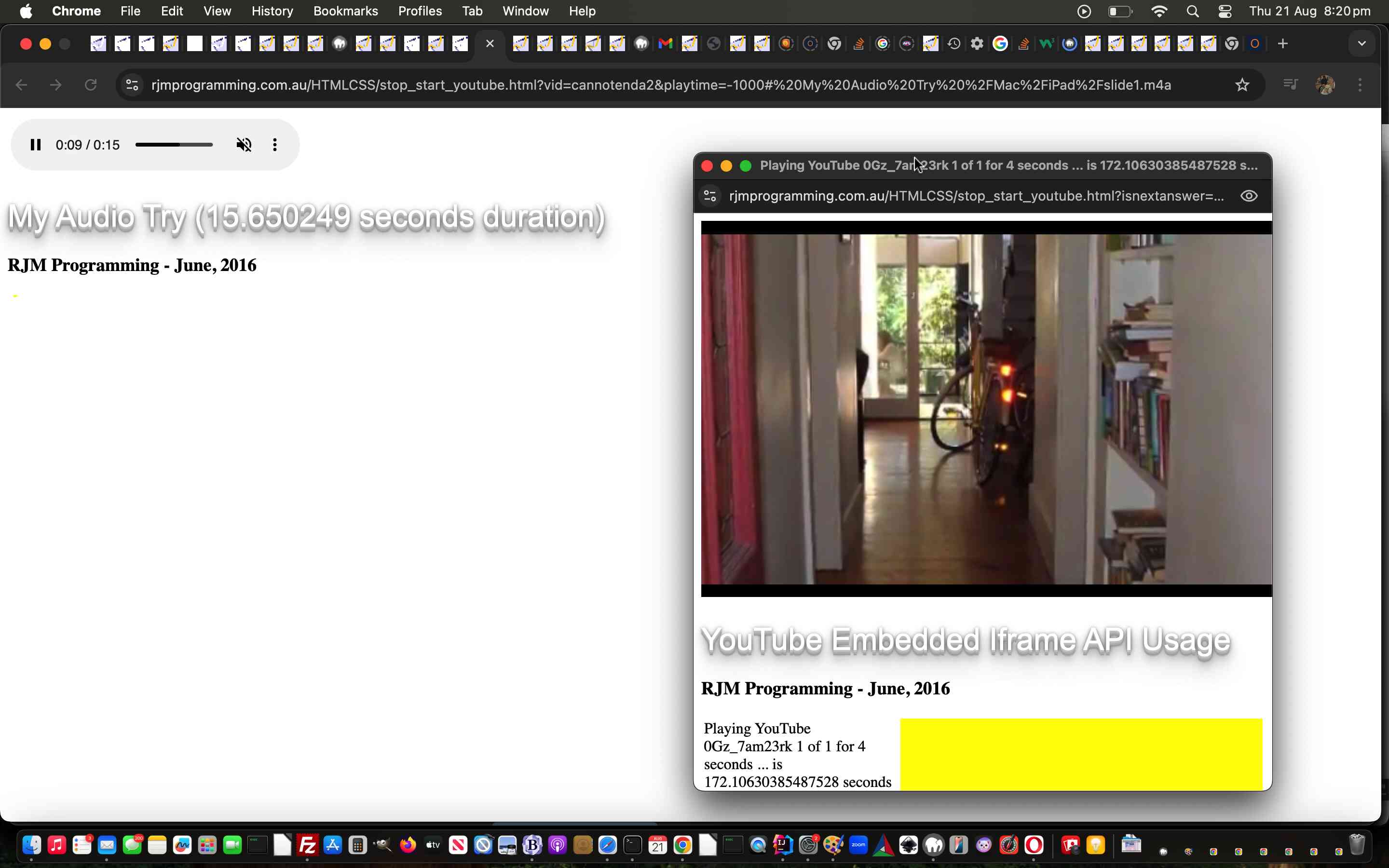
YouTube API Caller Other Media Interfacing Tutorial
Today’s work is the result of a “generic push” by us to improve on attempts in the past to use our inhouse YouTube video playing interfacing suite of web applications to mix …
- YouTube video media content … interspersed with …
- non YouTube media content
… when we presented Spliced Audio/Video YouTube Shuffle Tutorial blog posting thread. We better like this “generic push” idea of adapting our inhouse YouTube API interfacing web application to process both types of media input categories and be handled just within it’s remit, if there are non YouTube media items, within a (newly nesting) …
- table element … with …
- left hand cell handling YouTube video media content presented via YouTube API’s iframe element approach … and the …
- right hand cell handling non YouTube video media content presented via video or audio or img or iframe element depending on the data mimetype …
… and it is our inhouse YouTube API interfacing web application’s job to toggle between CSS display:none; and display:table-cell; for these two cells appropriately.
This work we see as a two part mini-project where …
- today’s phase 1 work isolates that inhouse YouTube API interfacing web application and asks it to handle new hashtag based data arguments coming in to demonstrate it, in that isolation, works both for the new paradigm and any previous scenarios … and then …
- after today we start phase 2 work interfacings, where we will rejoin the blog posting thread of yesterday’s Tabular Single Row Emoji Sharing Menu Tutorial and allow for the smarter inhouse YouTube API interfacing web application to be relatively seamless changing between YouTube and non YouTube media playing should a user enter a data URI, for example, in one of those textboxes to the right of the checkboxes
… for the modified stop_start_youtube.html YouTube API caller.
Here is a non YouTube video example …
… and here is a YouTube example …
… and here is a non YouTube audio example …
… and here is a non YouTube animated GIF example …
If this was interesting you may be interested in this too.
If this was interesting you may be interested in this too.
If this was interesting you may be interested in this too.
If this was interesting you may be interested in this too.
If this was interesting you may be interested in this too.
If this was interesting you may be interested in this too.
If this was interesting you may be interested in this too.
If this was interesting you may be interested in this too.
If this was interesting you may be interested in this too.
If this was interesting you may be interested in this too.
If this was interesting you may be interested in this too.
